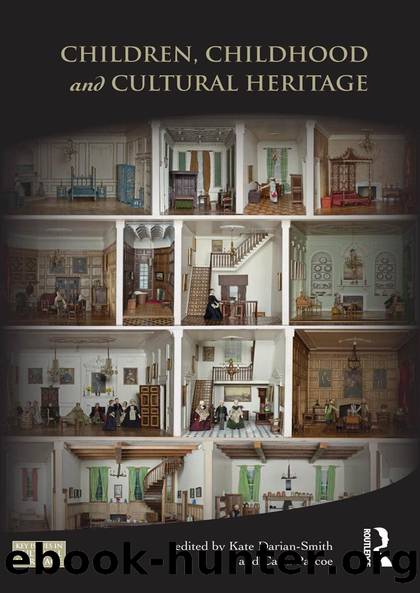Children, Childhood and Cultural Heritage by Kate Darian-Smith Carla Pascoe

Author:Kate Darian-Smith, Carla Pascoe [Kate Darian-Smith, Carla Pascoe]
Language: eng
Format: epub
ISBN: 9780415529952
Barnesnoble:
Publisher: Taylor & Francis
Published: 2012-11-19T00:00:00+00:00
Figure 9.1
Funerary altar for Q. Sulpicius Maximus, dating to late first century AD, now in Palazzo dei Conservatori, Rome. Photo: German Archaeological Institute, Rome, 71. 1694.
The city of Rome is in itself an outstanding resource for the heritage and tourism industries, but it is also highly problematic in terms of whose history is privileged and for what ends. In many early archaeological excavations post-Roman material was stripped away in order to access the remains of the classical past since that was perceived as Romeâs most important and influential period. At its peak the Roman Empire reached from the modern near east, south into the Egyptian deserts, north to Hadrianâs Wall and west to the Rhine and the Danube and lasted for over seven hundred years. Almost since the fall of Rome in the fifth century AD every new generation has re-invented an idea of Rome to suit its own political and cultural agenda. For instance, during the Renaissance various popes engaged in building programmes that linked the monuments that expressed the greatness of Romeâs imperial past to the power of the Church. In the twenty-first century the idea of Rome and its empire is so embedded in Western culture that we all think we âknowâ something about it. Ancient Rome is a popular setting for film and television dramas, and for modern novels of all genres. Film and television have given us a visual landscape with all the iconic elements we have learned to expect: colonnaded squares, statues on podiums, temples, amphitheatres, cobbled streets. Scriptwriters and novelists have peopled this cityscape with characters who speak with current linguistic forms and idioms and use a body language that a modern audience can recognize and empathize with. But the danger here is that an audience slips easily into thinking the ancient Romans were much like âusâ.
Download
This site does not store any files on its server. We only index and link to content provided by other sites. Please contact the content providers to delete copyright contents if any and email us, we'll remove relevant links or contents immediately.
Cecilia; Or, Memoirs of an Heiress — Volume 1 by Fanny Burney(32064)
Cecilia; Or, Memoirs of an Heiress — Volume 3 by Fanny Burney(31459)
Cecilia; Or, Memoirs of an Heiress — Volume 2 by Fanny Burney(31409)
The Great Music City by Andrea Baker(30784)
We're Going to Need More Wine by Gabrielle Union(18636)
All the Missing Girls by Megan Miranda(14748)
Pimp by Iceberg Slim(13781)
Bombshells: Glamour Girls of a Lifetime by Sullivan Steve(13689)
Fifty Shades Freed by E L James(12918)
Talking to Strangers by Malcolm Gladwell(12881)
Norse Mythology by Gaiman Neil(12836)
For the Love of Europe by Rick Steves(11528)
Crazy Rich Asians by Kevin Kwan(8891)
Mindhunter: Inside the FBI's Elite Serial Crime Unit by John E. Douglas & Mark Olshaker(8707)
The Lost Art of Listening by Michael P. Nichols(7165)
Enlightenment Now: The Case for Reason, Science, Humanism, and Progress by Steven Pinker(6877)
The Four Agreements by Don Miguel Ruiz(6322)
Bad Blood by John Carreyrou(6280)
Weapons of Math Destruction by Cathy O'Neil(5837)
